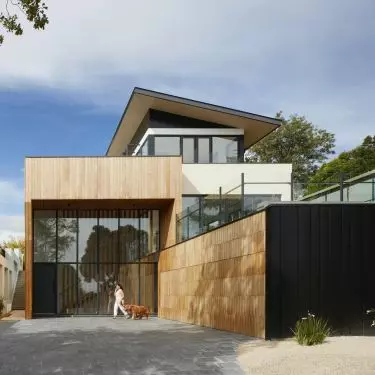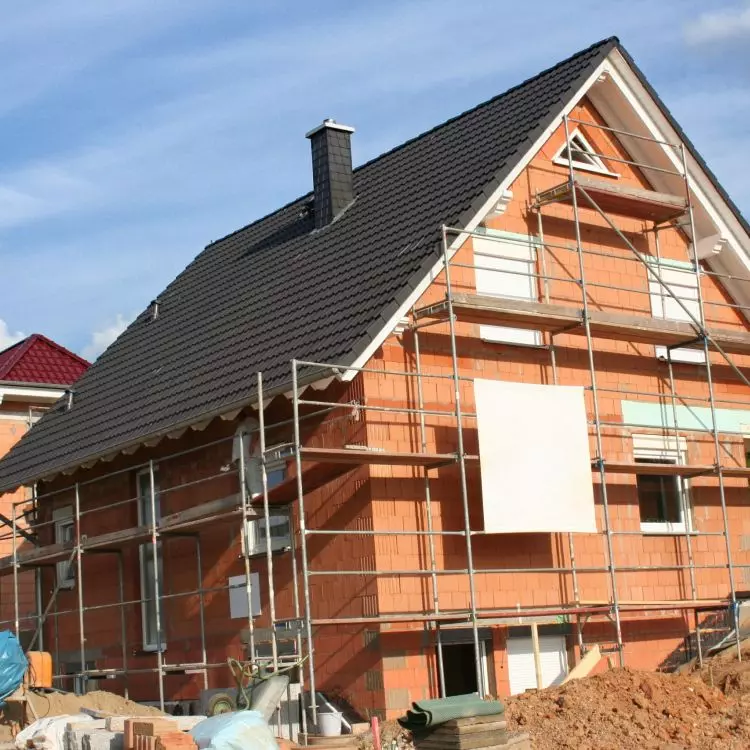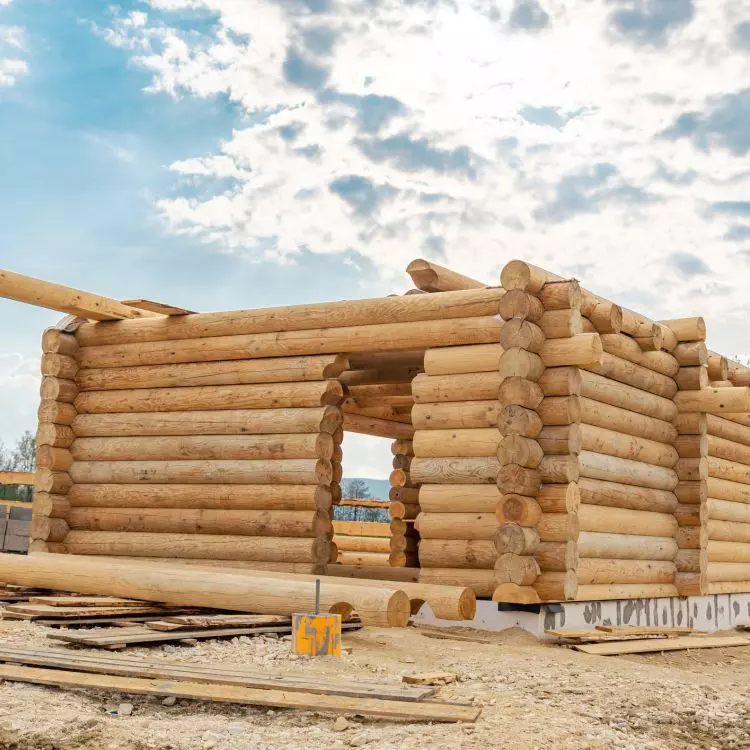The choice of material for the construction of a house is not just a matter of aesthetics. When making a decision, it is necessary to take into account the cost, the time of completion of the entire project or the energy efficiency of the building. Among the most popular construction materials for many years, wood competes with brick and hollow block or even modern silicate. Both frame and masonry structures have their advantages and disadvantages - how to choose the optimal solution? Let's take a closer look at both options.
Wooden house - a rustic nest in harmony with nature
Wood is probably the most versatile construction material - so it's no wonder that its popularity in construction is not waning. Wooden cottages with a gazebo, preferably in a forest setting, are for many people a return to their roots, a memory of a vacation at grandma's house or a dream come true for their private country cottage.
In Poland, wood buildings include designs that pay homage to Old Polish architecture from the turn of the 20th century, but also often combine barn silhouette with modernist design. In domestic housing, it is less common to see references to colorful cottages characteristic of Scandinavia.
With regard to the technology of construction of a wooden house, one can distinguish structures of the type:
-
frame - this is the most well-known way of erecting wooden houses, especially in Poland, but also in Scandinavia or North America. Its construction is based on a wooden frame, which is then filled with insulation material and plasterboard;
-
log - is otherwise popular log houses, which are prevalent in mountainous regions. The construction consists of laying wooden logs using the log-frame method and fastening them with natural materials, such as oak wedges;
-
prefabricated - modular houses are slowly gaining popularity in our country. The structure consists of prefabricated elements, such as the floor and walls (often including windows, insulation and electrical wiring), which are then "assembled" by a construction team.
Wooden log houses are a familiar feature of the landscape in southern Poland. The diameter of logs for the construction of a year-round house can range from 30 to 48 cm.
Photo: Damian Lugowski ©iStock
Are you thinking about building a wooden house? Surely you have reached many extreme opinions about this solution. In the article we have collected the most important advantages and disadvantages of wooden houses.
Advantages of wooden houses
-
The cost of construction - this may come as a surprise to some, but in the end, the construction of a wooden house can be slightly lower than that of a brick house. This is due, among other things, to the lightness of the structure and therefore the cost of foundations or transportation of materials;
-
construction time - erecting a modular house takes from a few days to a few weeks. As for the frame structure, construction can take about 3 months;
-
material availability - wood for building a house is a widely available material. Efficient construction of a wooden house is facilitated by a thriving timber industry;
-
thermal properties of wood - wood conducts heat well, so it acts as an insulator in its own right. In addition, the tight construction of a wooden house prevents heat loss;
-
original appearance - no other material can duplicate the aesthetics of a wood house. Depending on the design, you can emphasize the modern character of the building or its rustic beauty;
-
eco-friendliness - the construction of a house made of wood is compatible with sustainable development. In addition, such a building "works" all the time, regulating humidity and even creating its own microclimate, which promotes the health of the residents.
In modern designs of wooden houses, glass blends perfectly with the natural material.
Photo by Hans Isaacson © UNSPLASH
Disadvantages of wooden houses
-
less availability of a construction team - due to the popularity of brick houses, it is much more difficult to find a good and available construction team that specializes in wooden houses;
-
limited durability - wood, more than concrete, is susceptible to the passage of time. It is assumed that the strength of a wooden ceiling decreases significantly after about 50 years;
-
the need for maintenance - in order to prolong the life of a wooden structure, it is necessary to take care of its maintenance. Wooden elements require impregnation and regular renovation;
-
low thermal accumulation - although a wooden house heats up faster, it gives off heat just as quickly, which can be troublesome in the winter months. Here it is worth taking care of additional insulation, especially of the roof, as well as energy-efficient heating;
-
noisy ceilings - when choosing wooden construction, one should be prepared for the various sounds the house makes: wood shooting, creaking or noises when walking on the ceiling. However, proper soundproofing can be a partial solution here;
-
lower value on the secondary market - due to their lower durability, wooden houses lose value more quickly over the years than brick houses.
Brick house - durability and safe refuge
Despite the regular appearance of newer and newer solutions in construction, brick houses are still the most popular in Poland. Their stable construction is synonymous with multi-generational durability and safety. From "Polish manor houses" through communist-era cubes, to classic bungalows or modern glazed structures - the architectural landscape here is extremely diverse.
What materials are used to build houses in Poland? The era of heavy and expensive brick today is gone, replaced by ceramic blocks, cellular concrete or expanded concrete. These solutions allow to create a stable, but still lightweight structure with good thermal insulation. More environmentally friendly options are also available, such as silicate, which is a combination of quartz sand, lime and water.
In the construction of brick houses, materials such as clay blocks are used. The red blocks are distinguished by their high compressive strength and environmental friendliness
Photo: Heiko Barth ©iStock
Learn about the advantages and disadvantages of brick houses
Advantages of brick houses
-
gradual construction process - construction work, due to a certain phasing, can be staggered over time and depend, for example, on available cash;
-
durability - it is assumed that the durability of a brick house is at least 100 years. The structure is resistant to outdoor conditions, water, fire or chemicals. Nevertheless, do not forget about protection in the form of waterproofing - read more about protecting the building from moisture and leaks;
-
thermal insulation - masonry buildings retain heat longer in winter and heat up more slowly in summer;
-
energy efficiency - masonry walls are especially recommended to choose for energy-efficient and passive technology;
-
lack of maintenance - unlike wooden structures, masonry houses do not require much renovation and protection;
-
acoustics - concrete and brick show high acoustic absorption, providing residents with greater comfort and silence;
-
availability of professionals - due to the popularity of masonry construction, it is easy to find a proven construction team.
Disadvantages of brick houses
-
construction waste - the construction of a brick house generates a lot of garbage - from concrete fragments to Styrofoam leftovers - which require proper disposal;
-
construction time - depends on the season and availability of materials it can range from 1 year to as long as 3 years or more;
-
greater difficulty in remodeling - requires complex installation and formal work;
-
greater thickness of walls - this means a loss of about 10% of usable space.
Wood or brick house? What will be your dream house?
Wood, concrete, or maybe other construction materials? Each of these solutions is distinguished by good properties for building the perfect house. Before you make a final decision, make sure that the technology and materials will work for your vision and can be applied to the site. Be inspired by the sample designs of wooden and brick houses you will find on PdD.
Are you planning to build a house? We have more construction tips for you
Compiled by:BEATA LEŚNIEWICZ
































